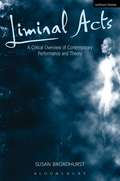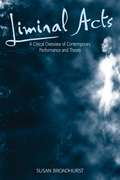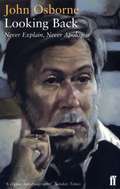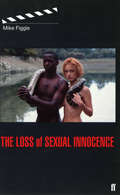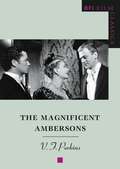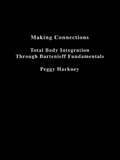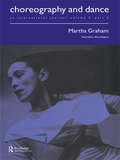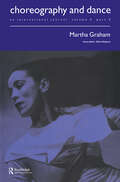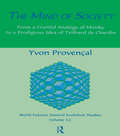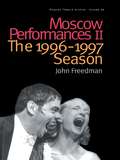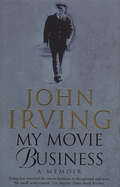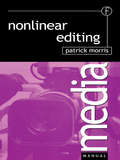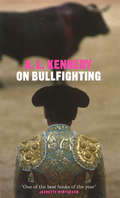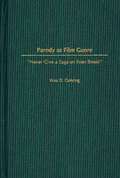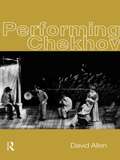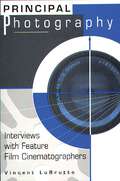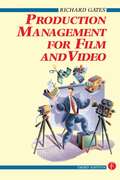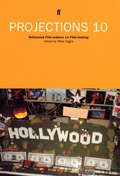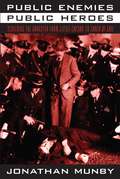- Table View
- List View
Liminal Acts: A Critical Overview of Contemporary Performance and Theory
by Susan BroadhurstThe term liminal refers to a marginalized space of fertile chaos and creative potential where nothing is fixed or certain. Liminal performance is an emerging genre which has surfaced only in recent times and describes a range of interdisciplinary, highly experimental, performative works in theatre and performance, film and music-performances which can be seen to prioritize the body, the technological and the primordial. Broadhurst argues that traditional and contemporary critical and aesthetic theories are ultimately deficient in interpreting liminal performance. This revolutionary work first surveys traditional aesthetics in the writings of Kant, Nietzsche and Heidegger and juxtaposes them with contemporary aesthetics in the writings of Foucault, Derrida, Baudrillard and Lyotard. A series of case studies follows and, Broadhurst concludes with a summary description of liminal performances as an emerging genre. Works discussed in detail include: Pina Bausch's Tanztheater, the innovative Theatre of Images of Robert Wilson and Philip Glass, the controversial social sculptures of the Viennese Actionists, Peter Greenaway's painterly aesthetics, Derek Jarman's queer politics, digitized sampled music, and neo-gothic sound.
Liminal Acts: A Critical Overview of Contemporary Performance and Theory
by Susan BroadhurstThe term liminal refers to a marginalized space of fertile chaos and creative potential where nothing is fixed or certain. Liminal performance is an emerging genre which has surfaced only in recent times and describes a range of interdisciplinary, highly experimental, performative works in theatre and performance, film and music-performances which can be seen to prioritize the body, the technological and the primordial. Broadhurst argues that traditional and contemporary critical and aesthetic theories are ultimately deficient in interpreting liminal performance. This revolutionary work first surveys traditional aesthetics in the writings of Kant, Nietzsche and Heidegger and juxtaposes them with contemporary aesthetics in the writings of Foucault, Derrida, Baudrillard and Lyotard. A series of case studies follows and, Broadhurst concludes with a summary description of liminal performances as an emerging genre. Works discussed in detail include: Pina Bausch's Tanztheater, the innovative Theatre of Images of Robert Wilson and Philip Glass, the controversial social sculptures of the Viennese Actionists, Peter Greenaway's painterly aesthetics, Derek Jarman's queer politics, digitized sampled music, and neo-gothic sound.
Looking Back: Look Back In Anger; Epitaph For George Dillon; The World Of Paul Slickey; Dejavu (Faber Drama Ser. #Vol. 9)
by John OsborneWhen John Osborne died at Christmas 1994, his obituaries cited his autobiographical writings as perfect examples of undiluted talent and acerbic wit. Now, Osborne's superb autobiographies, A Better Class of Person: 1929-1956 and Almost a Gentleman: 1955-1966 (winner of the J. R. Ackerley Prize), are available for the first time in one volume, Looking Back.'A brilliant, funny, melancholy and acrimonious book of memoirs . . . Almost every page confirms that his powers as an elegist, definer of the Zeitgeist and master of unforgiving disgust remain undimmed.' ObserverThis volume also contains 'Bad John', a review by Alan Bennett of A Better Class of Person, and David Hare's eulogy for John Osborne at the memorial service for Osborne in 1995.
Loss of Sexual Innocence (Faber And Faber Screenplays Ser.)
by Mike FiggisMike Figgis's Loss of Sexual Innocence is a fascinating fusion of stories, dreams, images and music. The film is a meditation on the process of growing up, and the inevitable loss of innocence this entails. The central image is the expulsion of Adam and Eve from the Garden of Eden; and as in all of Mike Figgis's work, the focus is upon the passionate and often troublesome nature of relationships between men and women. The film was shot in Italy, Tunisia, and Figgis'snative Newcastle, on the lowest of imaginable budgets. In an introduction to the screenplay, Figgis describes how he brought off this remarkable task.
The Magnificent Ambersons (BFI Film Classics)
by V.F. PerkinsV.F. Perkins explores Orson Welles' genius in directing actors, his intricate weaving of his own narration in and around the drama, and his unsurpassed use of the long take to capture the fines nuance of expression and unspoken feeling. For Perkins The Magnificent Ambersons 'has as many marvellous shots, scenes, ideas, performances as most film-makers could hope to achieve in an entire career'. Second only to Citizen Kane in work, this film can never be seen as he intended it, after being heavily cut by RKO studio. However, it remains a remarkable picture of dynastic ruin and social change.
Making Connections: Total Body Integration Through Bartenieff Fundamentals
by Peggy HackneyHuman movement influences an individual's perceptions and ability to interact with the world. Through exercises, illustrations, and detailed anatomical drawings, this remarkable book guides the reader toward total body integration. An experimental approach to movement fundamentals involving the patterning of connections in the body according to principles of efficient movement, the process of total body integration encourages personal expression and full psychological involvement.
Making Connections: Total Body Integration Through Bartenieff Fundamentals
by Peggy HackneyHuman movement influences an individual's perceptions and ability to interact with the world. Through exercises, illustrations, and detailed anatomical drawings, this remarkable book guides the reader toward total body integration. An experimental approach to movement fundamentals involving the patterning of connections in the body according to principles of efficient movement, the process of total body integration encourages personal expression and full psychological involvement.
Martha Graham: A special issue of the journal Choreography and Dance
by Alice HelpernFirst Published in 1999. Routledge is an imprint of Taylor & Francis, an informa company.
Martha Graham: A special issue of the journal Choreography and Dance
by Alice HelpernFirst Published in 1999. Routledge is an imprint of Taylor & Francis, an informa company.
Mind of Society
by ProvencalFirst Published in 1999. Routledge is an imprint of Taylor & Francis, an informa company.
Mind of Society
by ProvencalFirst Published in 1999. Routledge is an imprint of Taylor & Francis, an informa company.
Moscow Performances II: The 1996-1997 Season
by John FreedmanThis is a collection of John Freedman's reviews and articles, most originally written for the Moscow Times, in which he focuses his expert critical eye on the directors, writers and actors who held centre stage during the 1996-97 theatre season in Moscow. The book looks at the debut of promising new artists and directors at the Moscow Art Theatre celebrating its 100th anniversary this year and offers a wealth of insight into the latest developments in Russian theatre. Freedman illuminates all of the season's noteworthy trends and events in clear, informed and unapologetically opinionated reports. More than just an overview of the stars and highlights, Moscow Performances II observes at close range the playhouses and the people who make up the ever-changing face of contemporary Russian theatre today. This volume is generously illustrated with photographs of featured productions and will be a useful reference for students, professors, writers, directors and actors in the fields of Russian studies, theatre studies, theatre history and contemporary culture.
Moscow Performances II: The 1996-1997 Season
by John FreedmanThis is a collection of John Freedman's reviews and articles, most originally written for the Moscow Times, in which he focuses his expert critical eye on the directors, writers and actors who held centre stage during the 1996-97 theatre season in Moscow. The book looks at the debut of promising new artists and directors at the Moscow Art Theatre celebrating its 100th anniversary this year and offers a wealth of insight into the latest developments in Russian theatre. Freedman illuminates all of the season's noteworthy trends and events in clear, informed and unapologetically opinionated reports. More than just an overview of the stars and highlights, Moscow Performances II observes at close range the playhouses and the people who make up the ever-changing face of contemporary Russian theatre today. This volume is generously illustrated with photographs of featured productions and will be a useful reference for students, professors, writers, directors and actors in the fields of Russian studies, theatre studies, theatre history and contemporary culture.
My Movie Business: A Memoir
by John IrvingJohn Irving's memoir begins with his account of the distinguished career and medical writings of the novelist's grandfather Dr Frederick C. Irving, a renowned obstetrician and gynaecologist, and includes Mr Irving's incisive history of abortion politics in the United States. But My Movie Business focuses primarily on the thirteen years John Irving spent adapting his novel The Cider House Rules for the screen - for four different directors.Mr Irving also writes about the failed effort to make his first novel, Setting Free the Bears, into a movie, about two of the films that were made from his novels (but not from his screenplays), The World According to Garp and The Hotel New Hampshire; about his slow progress at shepherding his screenplay of A Son of the Circus into production.Not least, and in addition to its qualities as a memoir - anecdotal, comic, affectionate and candid - My Movie Business is an insightful essay on the essential differences between writing a novel and writing a screenplay.
Nonlinear Editing (Media Manuals Ser.)
by Patrick MorrisNonlinear is a buzzword for every broadcaster and facility house worldwide. Systems range from the humble to the exotic, and despite the growing acceptance of the technology, many users, both new and experienced, find the complexity of the operation and the time spent loading the material and rendering effects difficult to manage at first. Non-linear editing also comes with its own specialist language, requiring each editor to be conversant with a new range of skills from day one. As desktop systems improve the role of the traditional editor is constantly evolving and expanding. This is an operational manual for professional trainees and students in the post-production industry. It will also serve as a useful reference tool for producers and directors. Written in a concise and clear manner, the book serves as a practical guide to the efficient management and operation of non-linear editing systems. It describes the technology involved, the essential techniques to be mastered including on-line and off-line editing, project management, rendering effects, working with graphics and audio, and adding third party applications. Designed for quick and easy reference, this is a practical user guide to non-linear editing that comes complete with an extensive jargon buster that will get you fully conversant with the technology in a short space of time.Patrick Morris is a Trainer in Post-Production for the Television Corporation of Singapore and the Singapore Broadcasting Authority as well as Chairman of the South East Asia User Group. He is an AVID Certified Trainer with a working knowledge of Lightworks, Media 100, Quantel, D Vision and other systems. Formerly a consultant and Senior Editor for BBC, ITV and SKY TV, he also spent many years a Training Manager for BBC Wood Norton and as Senior Video-Tape Editor for Television South West.
Nonlinear Editing
by Patrick MorrisNonlinear is a buzzword for every broadcaster and facility house worldwide. Systems range from the humble to the exotic, and despite the growing acceptance of the technology, many users, both new and experienced, find the complexity of the operation and the time spent loading the material and rendering effects difficult to manage at first. Non-linear editing also comes with its own specialist language, requiring each editor to be conversant with a new range of skills from day one. As desktop systems improve the role of the traditional editor is constantly evolving and expanding. This is an operational manual for professional trainees and students in the post-production industry. It will also serve as a useful reference tool for producers and directors. Written in a concise and clear manner, the book serves as a practical guide to the efficient management and operation of non-linear editing systems. It describes the technology involved, the essential techniques to be mastered including on-line and off-line editing, project management, rendering effects, working with graphics and audio, and adding third party applications. Designed for quick and easy reference, this is a practical user guide to non-linear editing that comes complete with an extensive jargon buster that will get you fully conversant with the technology in a short space of time.Patrick Morris is a Trainer in Post-Production for the Television Corporation of Singapore and the Singapore Broadcasting Authority as well as Chairman of the South East Asia User Group. He is an AVID Certified Trainer with a working knowledge of Lightworks, Media 100, Quantel, D Vision and other systems. Formerly a consultant and Senior Editor for BBC, ITV and SKY TV, he also spent many years a Training Manager for BBC Wood Norton and as Senior Video-Tape Editor for Television South West.
On Bullfighting (Yellow Jersey Shorts Ser.)
by A. L. KennedyBullfighting - the ultimate spectator sport.Acclaimed novelist A. L. Kennedy unpeels the layers and explains the mechanics before dissecting them with surgical precision. Beyond the theatre, the costume and the well-worn plot she focuses on the fact that a man faces his death while a crowd looks on. The result is a startling confrontation with her own, and mankind's, mortality.
Parody as Film Genre: Never Give a Saga an Even Break (Contributions to the Study of Popular Culture)
by Wes D. GehringParody is the least appreciated of all film comedy genres and receives little serious attention, even among film fans. This study elevates parody to mainstream significance. A historical overview places the genre in context, and a number of basic parody components, which better define the genre and celebrate its value, are examined. Parody is differentiated from satire, and the two parody types, traditional and reaffirmation, are explained. Chapters study the most spoofed genre in American parody history, the Western; pantheon members of American Film Comedy such as The Marx Brothers, W. C. Fields, Mae West, and Laurel and Hardy; pivotal parody artists, Bob Hope and Woody Allen; Mel Brooks, whose name is often synonymous with parody; and finally, parody in the 1990s. Films discussed include Destry Rides Again (1939), The Road to Utopia (1945), My Favorite Brunette (1947), The Paleface (1948), Butch Cassidy and the Sundance Kid (1969), Blazing Saddles (1974), Young Frankenstein (1974), Hot Shots! Part Deux (1993) and Scream (1996).This examination of parody will appeal to scholars and students of American film and film comedy, as well as those interested in the specific comedians discussed and the Western genre. Gehring's work will also find a place in American pop culture studies and sociological studies of the period from the 1920s to the 1990s. The book is carefully documented and includes a selected bibliography and filmography.
Performing Chekhov
by David AllenFirst published in 1999. Routledge is an imprint of Taylor & Francis, an informa company.
Performing Chekhov
by David AllenFirst published in 1999. Routledge is an imprint of Taylor & Francis, an informa company.
Principal Photography: Interviews with Feature Film Cinematographers
by Vincent LoBruttoBy using photography as a storytelling medium, the cinematographer plays a key role in translating a screenplay into images and capturing the director's vision of a film. This volume presents in-depth interviews with 13 prominent cinematographers, who discuss their careers and the art and craft of feature film cinematography. The interviewees—who represent the spectrum of big-budget Hollywood and low-budget independent filmmaking from the sixties through the nineties—talk about their responsibilities, including lighting, camera movement, equipment, cinematic grammar, lenses, film stocks, interpreting the script, the budget and schedule, and the psychological effect of images. Each interview is preceded by a short biography and a selected filmography, which provide the background for a detailed analysis of the photographic style and technique of many highly acclaimed and seminal films.
Production Management for Film and Video
by Richard GatesPacked with step by step information, hints and tips, this book provides all the basic information needed to production manage a film or video from beginning to end - from idea to delivery. Production Management for Film and Video gives all the basic information needed to production manage a film or video from beginning to end - from idea to delivery.Aspiring young film producers, programme makers and students of film or video production will find this an essential source of information, as indeed will anybody wishing to improve their knowledge and skills in the field. One is guided from the script or proposal, right through the various stages of production management to include:· script breakdown· crossplotting· scheduling· budgeting· preparation· the shoot· editing and post-production· deliveryNow in its third edition, Production Management for Film and Video has been further revised to include: · information on health and safety requirements· the need to be aware of computer generated imagery · the effect this kind of programme making has on schedules and budgets. Different kinds of management for different productions are also covered - from features through to documentaries - and advice is offered on how to run a production more effectively. Examples, taken from actual productions, demonstrate the kind of documentation needed to develop, run and control a production. Emphasis is placed on the basic principles of good management that apply to all the different kinds of film that can be produced.Richard Gates is a freelance producer/production manager and has been involved in over 40 productions of different kinds. He also lectures extensively on production and production management techniques.
Production Management for Film and Video
by Richard GatesPacked with step by step information, hints and tips, this book provides all the basic information needed to production manage a film or video from beginning to end - from idea to delivery. Production Management for Film and Video gives all the basic information needed to production manage a film or video from beginning to end - from idea to delivery.Aspiring young film producers, programme makers and students of film or video production will find this an essential source of information, as indeed will anybody wishing to improve their knowledge and skills in the field. One is guided from the script or proposal, right through the various stages of production management to include:· script breakdown· crossplotting· scheduling· budgeting· preparation· the shoot· editing and post-production· deliveryNow in its third edition, Production Management for Film and Video has been further revised to include: · information on health and safety requirements· the need to be aware of computer generated imagery · the effect this kind of programme making has on schedules and budgets. Different kinds of management for different productions are also covered - from features through to documentaries - and advice is offered on how to run a production more effectively. Examples, taken from actual productions, demonstrate the kind of documentation needed to develop, run and control a production. Emphasis is placed on the basic principles of good management that apply to all the different kinds of film that can be produced.Richard Gates is a freelance producer/production manager and has been involved in over 40 productions of different kinds. He also lectures extensively on production and production management techniques.
Projections 10: Hollywood Film-makers On Film-making
by Mike FiggisMike Figgis has always been intrigued by the workings of the Hollywood System. As he progressed from his acclaimed US debut Internal Affairs, through hellish studio wrangles on Mr. Jones, to Oscar-laurelled success with Leaving Las Vegas, Figgis always wanted to find a way to document the mores of the Hollywood industry, before it could swallow him whole. For Projections, he accepted an invitation to return to LA in late 1998 and create just such a document. In conversation with established players such as Mel Gibson, Jodie Foster and Jerry Bruckheimer, plus ascending talents such as Salma Hayek and Paul Thomas Anderson, Figgis paints a refreshingly honest but unmistakably dark portrait of an industry where money does more than talk.Mike Figgis's witnesses include Mel Gibson, Jodie Foster, Mickey Rourke, Nastassja Kinski, Elizabeth Shue, Salma Hayek, Paul Thomas Anderson, Jerry Bruckheimer and many more . . .
Public Enemies, Public Heroes: Screening the Gangster from Little Caesar to Touch of Evil
by Jonathan MunbyIn this study of Hollywood gangster films, Jonathan Munby examines their controversial content and how it was subjected to continual moral and political censure. Beginning in the early 1930s, these films told compelling stories about ethnic urban lower-class desires to "make it" in an America dominated by Anglo-Saxon Protestant ideals and devastated by the Great Depression. By the late 1940s, however, their focus shifted to the problems of a culture maladjusting to a new peacetime sociopolitical order governed by corporate capitalism. The gangster no longer challenged the establishment; the issue was not "making it," but simply "making do." Combining film analysis with archival material from the Production Code Administration (Hollywood's self-censoring authority), Munby shows how the industry circumvented censure, and how its altered gangsters (influenced by European filmmakers) fueled the infamous inquisitions of Hollywood in the postwar '40s and '50s by the House Committee on Un-American Activities. Ultimately, this provocative study suggests that we rethink our ideas about crime and violence in depictions of Americans fighting against the status quo.
